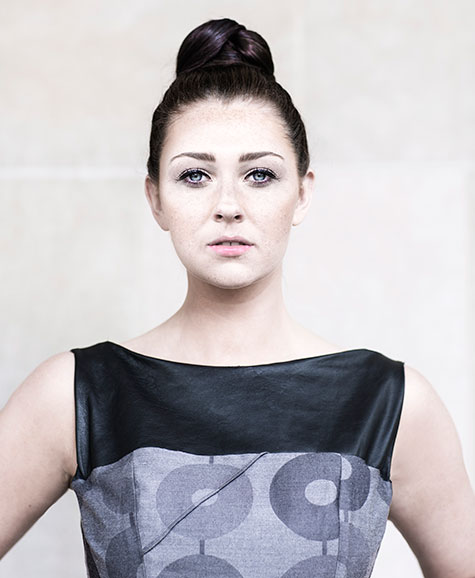
A fashion show is still a show. It has lights, music, glamour — and, of course, fantastic clothes. But in the end, it’s all about your audience.
“There are certain projects where you can go out on a limb and get a little crazy,” says Jennifer Ingram, a lecturer in the Sam Fox School of Design & Visual Arts. “But you always center on the customer. You never design without a customer in mind.”
At 6 p.m. Sunday, May 4, Ingram will lead 26 aspiring designers in presenting the Sam Fox School’s 85th Annual Fashion Design Show.
The fully choreographed, Paris-style extravaganza — which features dozens of models wearing scores of outfits — will take place in the Ballroom Theater of WUSTL’s 560 Music Center.
Tickets are $65 for general seating or $50 for students and WUSTL faculty and staff. Tickets are available through the Edison Theatre Box Office, (314) 935-6543. (Discounted tickets, of $45 and $35, are available prior to April 27.)
For more information, email samfoxschool@wustl.edu.
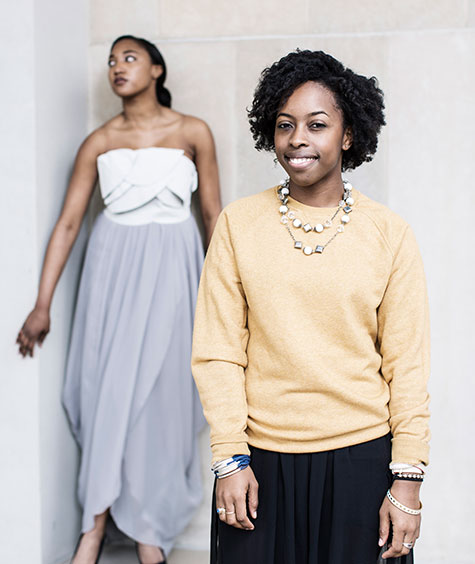
Developing new looks
The Fashion Design Show dates back to 1929, when Irving L. Sorger, merchandise manager for Kline’s department store, was struck by the lack of clothing marketed specifically to high school girls and college-age women.
To get a sense of just what those customers might want, Sorger met with WUSTL student designers and later organized a show for local garment manufacturers. Eight dresses were selected for production. Juniors fashion, for decades a staple of the St. Louis garment industry, was born.
Today, though clothes manufacturing has largely moved abroad, the concept of designing for a particular customer, or “muse,” remains a core tenant of the WUSTL fashion design program.
In addition to fabrics, construction and tailoring, “students have to understand costs and budgets and target markets,” says Ingram, herself a 2004 alumna.
“Once you know who the customer is, you can develop new looks for them.”
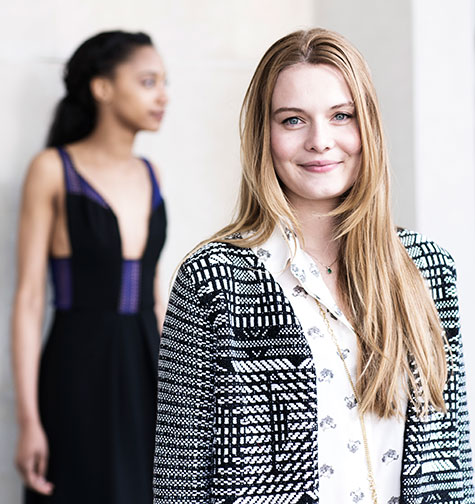
The fit is the key
This year’s show will open with cotton tunics designed by sophomores, followed by jackets and pants from the junior class.
“We start with tunics because they’re pretty easy to construct,” Ingram says. “It’s a front piece and a back piece. You don’t have to deal with armholes or crazy seams.
“Jackets are much more difficult,” Ingram says. “We really focus on sleeves, seaming and fit. The fit is the key. You can make something beautiful, but if the fit isn’t right, it just doesn’t work.”
For the seniors, “We begin with sportswear and dress groups because it teaches them to build a collection,” Ingram says. “They learn to create separates, to mix and match, to put an entire look together.”
Each piece in Claudia Frolova’s knit collection, for example, features a custom print inspired by the subways of New York, while Camille Wright offers contemporary twists on traditional Senegalese garments.
In the dress group, Ruth Schmalenberger pairs a handmade navy corset with a flowing yet impeccably structured skirt. Madeleine Docherty’s bright red “Flame Dress” features elaborate wiring in the neck and shoulders.
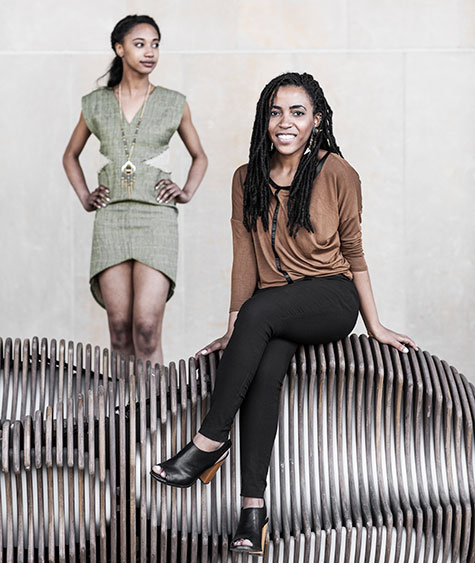
Signature collections
But perhaps the highlight of the evening will be the seniors’ signature collections. The fashion equivalent to a graduating thesis, each is a fully coordinated clothing line tailored to a specific audience and based on a specific theme.
Docherty, for example, built her signature collection entirely from recycled fabrics. Virginia Stattman creates adventurous women’s wear based on traditional men’s tailoring. Cherise Matthew offers clean, texture-oriented designs inspired by dance.
Laura Desch uses hand-painted silk to balance modern geometries with soft, fluid shapes. Hillary Lux employs bold patterns and strong yet wearable silhouettes to foster a sense of interplay between positive and negative space.
“Many students have done sportswear this year, but the collections are all very different,” Ingram says. “It’s a strong group, but it’s hard to put any two designers into the same category.
“They all have different perspectives,” Ingram says. “There’s a lot of individual passion.”
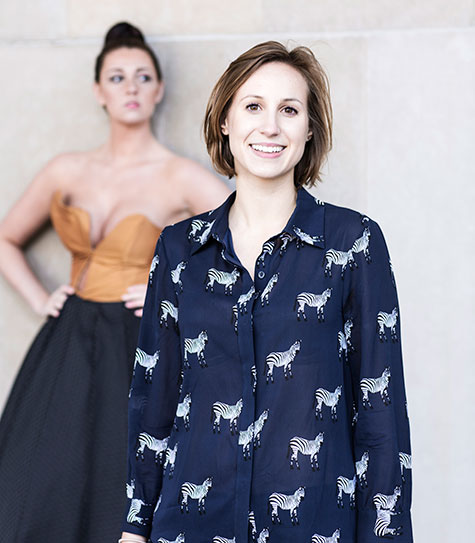
Organizers and co-sponsors
Jurors for the 85th Annual Fashion Show will be Tania Beasley-Jolly of Saks Fifth Avenue; alumna Susan Sanders Block, owner of The Designing Block; and Jennifer Meyer, assistant director of career development in the Sam Fox School.
Stylists are led by Dominic Bertani of the Dominic Michael Salon, who has done the models hair for 25 years. The models’ makeup will be done by students from The Paul Mitchell School. Lighting, audio and runway tech is by Ironman Sound. Gift bags are sponsored by Plaza Frontenac.
Robin VerHage-Abrams, associate professor and area coordinator for fashion, will introduce a variety of scholarships, cash prizes and awards.
Among the awards is the Dominic Michael Silver Scissors Designer of the Year Award, which is presented to one outstanding senior at the end of the evening. Block — who has helped organize the show for 20 years — sponsors the Silver Ripper Award, presented to one outstanding junior. Beasley-Jolly will present the Saks Fifth Avenue Honorary Designer Award.
Other fashion faculty include Lou Ann Card, Jonathan Navy and alumna Claire Thomas-Morgan (BFA ’08).
The 560 Music Center is located in University City, at 560 Trinity Ave., near the intersection with Delmar Boulevard. Doors will open at 5:30 p.m. A meet-and-greet with designers will immediately follow the show, at 7 p.m.
Formal looks are currently previewed in a special exhibition, through April 23, at Plaza Frontenac. Afterwards, works by the winner of the Honorary Designer Award will be featured in a two-week showing at Saks.
